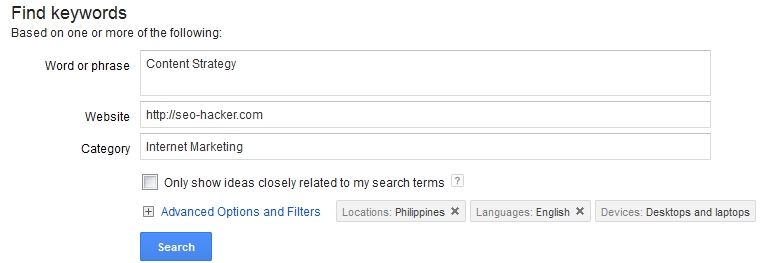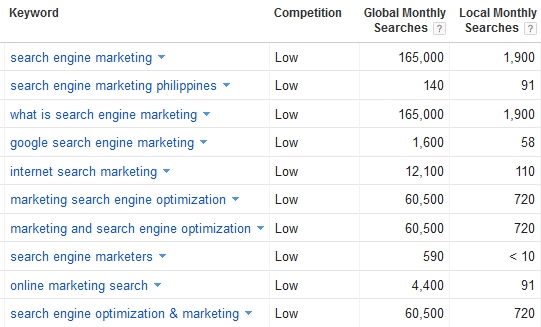Training your Content to Look for Users

Did you know that you can make your content strategy designed in such a way that it looks for its target users? Uh-huh, yeah – you just need to let your content out and let it do the sniffing out of you users for you.
This is part of a tutorial series entitled Content Strategy from SEO School where you can learn SEO that works.
Author’s Note: This Entry is basically how the whole Content Strategy Tutorial comes together
Real Estate Approach
These days, when you’re looking to buy a condo or a house, it’s easy to know where to start. There are sales agent who are handing out flyers and billboard signs and commercials in TV and in the radio – these things are tailor-made for their products to go out and entice a prospective customer.
In the online world, your content can be your sales agent – but you have to give your sales agent his tools to work with. And you know, I’ve found out that the best tool for a sales agent, thus far, is the Ad placement.
Giving your content an Ad Placement
I bet you also didn’t know that the Search Engine Results Page is the best place to put your content’s ads in? Yes. The SERP is an ad placement page – and the best placements are in the top three of the organic results. These spots for your ad placements will be the ones that will almost always pull the user in and enable you to gather sales leads.
How do you get the best spot in those ad placements? Train your content to look for users. Let’s take it step by step:
1) Know what kind of users you need your content to look for
This deals with the keywords your content is trying to target. There is no better way to know this than to understand the business, its processes, its customers, its products, etc. Having a good mastery of the business will instantly put into mind the keywords your prospective users are looking for.
I’ve put in a free Keyword Optimization Guide here to help up-and-coming companies and SEO specialists about everything they need to know about targeting keywords.
2) Know if there is a search market for those keywords
Check it out – the local and global monthly search volume can be easily checked with the Google Keywords tool. If the keywords your users are searching for has a good number of monthly searches, put them into your list and start training your content to sniff it out.
You just need to put in your desired keywords, and Google will tell you how many people are looking for it every month.
3) Develop your content with those keywords in mind
Nope, counting keyword density isn’t something I would push you to implement. The farthest you should go in implementing your keywords inside your content is to be mindful of it. Write with art – don’t let your keywords get in the way. But if you can insert a keyword or two here and there without affecting the content’s beauty – that is really the best way to go.
4) Apply On Site Optimization Techniques
 On Site Optimization is really not rocket science. It’s not too difficult to deal with. In fact, I’ve compiled a complete guide to a tried and tested on site optimization in our SEO School. You should check it out.
On Site Optimization is really not rocket science. It’s not too difficult to deal with. In fact, I’ve compiled a complete guide to a tried and tested on site optimization in our SEO School. You should check it out.
Some of the On Site Optimization factors include Title tag, interlinking, outbound links control, keyword prominence, etc.
5) Make sure your search snippet attracts click-through
There are three things that matter in your search snippet – title, description and URL. Making sure that these three are saying the right things for the user that your content is targeting can mean making or losing a prospective customer.
Title – This can be customized as the ‘SEO Title’. It’s usually different from your article title in the sense that this one is written for SEO and for the SERPs.
Description – This can be customized via meta description which is usually a ‘teaser’ of what the entire content is about.
URL – This can be customized using URL slugs in whatever CMS you are using in the Permalink or Slugs section.
6) Promote it in the right places
 Lastly, you need people checking out your content, reading through it, and engaging on an on-site social activity with it such as clicking on the ‘Like’, RT, or +1 button. This signals to Google the validity and the trustworthiness of your content.
Lastly, you need people checking out your content, reading through it, and engaging on an on-site social activity with it such as clicking on the ‘Like’, RT, or +1 button. This signals to Google the validity and the trustworthiness of your content.
So promote it in the right places such as in a specific FB group, or your twitter account, or perhaps in a specific forum – wherever your primary audience is.
These 6 steps aren’t so easy to do. But once you set this up in place, your content will be the one doing your selling for you – and in the top ad placement nonetheless!
You can learn about training your content further in our SEO school where we churn out fresh and free tutorials for your self-paced SEO studies.


